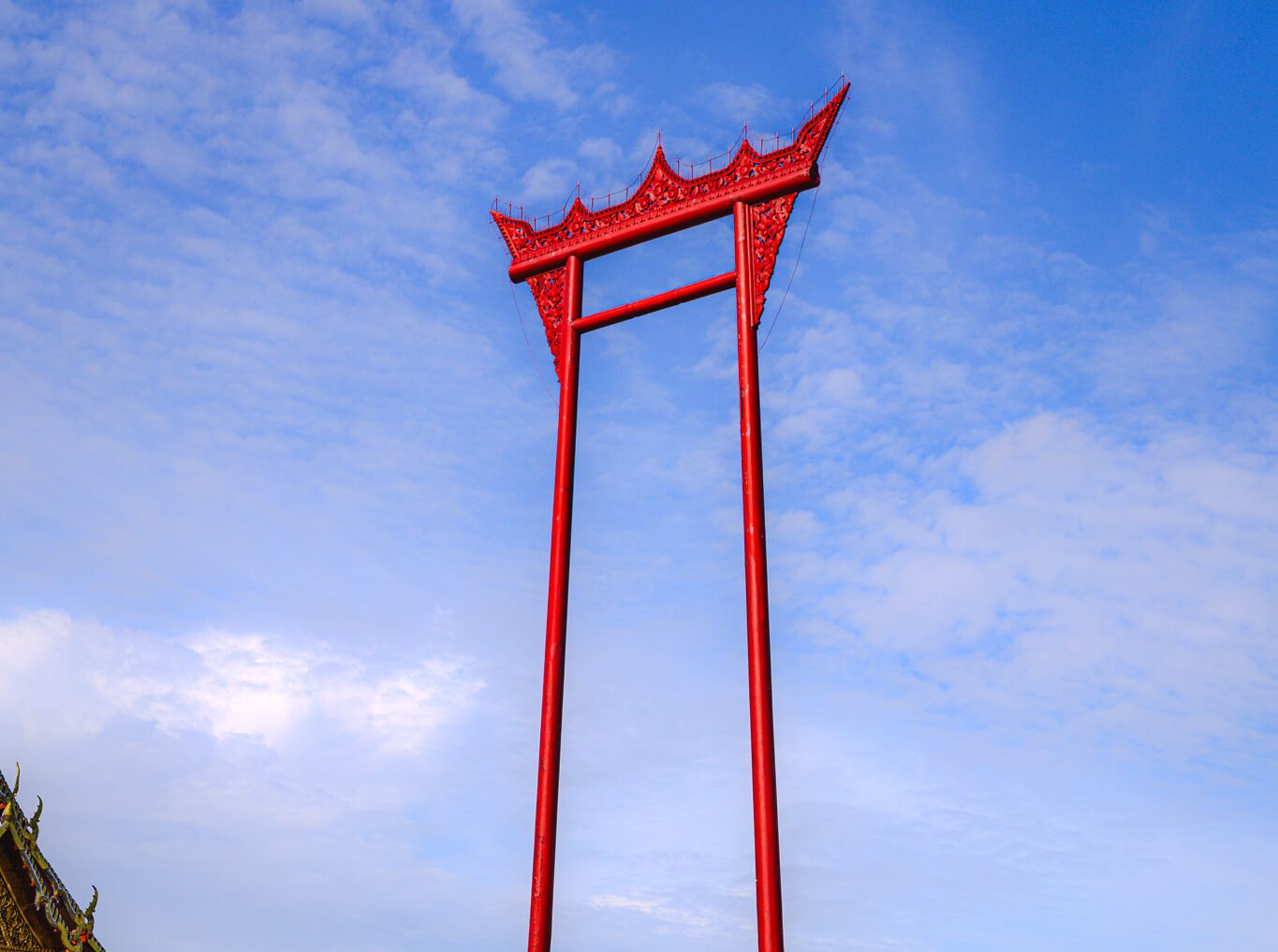GIANT SWING
The Giant Swing, or Sao Ching Cha in Thai, is one of Bangkok’s most iconic and culturally significant landmarks, located in the bustling area in front of Wat Suthat Thepwararam in the heart of Bangkok’s old town. It stands as a symbol of Bangkok’s rich heritage and religious traditions and is one of the city’s most photographed structures.

The Giant Swing was constructed in 1784 during the reign of King Rama I, the founder of the Rattanakosin Kingdom and the Chakri dynasty, making it over 230 years old. It was built as part of the Brahmin-Swayambhu ritual dedicated to the Hindu god Shiva, reflecting the blend of Hindu and Buddhist influences in Thai culture.
For over a century, the Giant Swing was the centerpiece of the annual Triyampawai or Lo-Chin-Cha festival, a Brahmin ceremony that took place in December to celebrate the harvest. During the ceremony, participants would swing on the structure in a daring display, attempting to grab a bag of gold suspended on a pole. The ritual symbolized the Hindu myth of the god Shiva’s creation of the world and his blessing of a bountiful rice harvest. However, due to several fatal accidents, the swinging ritual was discontinued in 1935, but the structure remains as a testament to its historical significance.
The Giant Swing is constructed from two massive teakwood pillars that are approximately 21.15 meters (about 69 feet) tall. The two pillars are connected by a wooden crossbar, and the structure is painted in a vibrant red color, which makes it stand out against the blue Bangkok sky. The pillars were originally sourced from Phrae Province in Northern Thailand, a region known for its high-quality teakwood.
Conclusion
GIANT SWING
